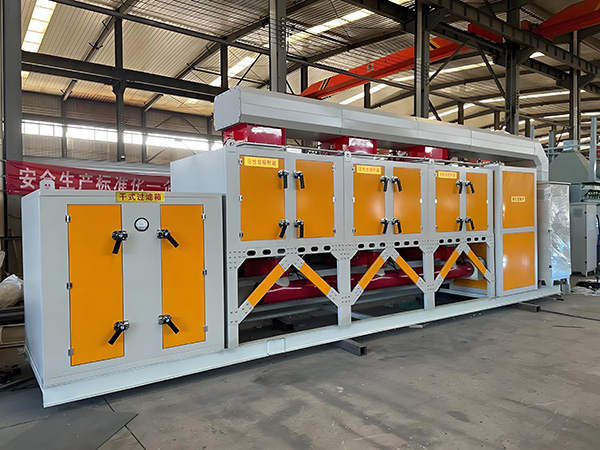-
All
-
bag Dust Collector
-
Electrostatic Precipitator
-
Cartridge Dust Collector
-
Desulfurization And Denitrification Equipment
-
Dust Collector Bag
-
Dust Collector Skeleton
-
Electromagnetic Pulse Valve
-
Rotary Valve
-
Screw Conveyor
-
Dust Conditioner
-
Plug Valve/Butterfly Valve
-
Scraper Conveyor
-
Catalytic Oxidizer
-
Cyclone Dust Collector
-
Sintered Plate Dust Collector
-
Spray Tower
-
Activated Carbon Adsorber
-
Light Oxygen Purifier
-
Dry Filter Box
-
Bucket Elevator

CO Catalytic Combustion Equipment
The main structure of CO catalytic combustion equipment consists of three parts: purification device host, induced draft fan, and control system. ...
The main structure of CO catalytic combustion equipment consists of three parts: purification device host, induced draft fan, and control system. The purification device includes: dust removal flame retardant dust collector, heat exchanger, preheater, and catalytic combustion chamber.
CO catalytic combustion equipment is a method in which combustible components in exhaust gas can undergo combustion reactions at lower temperatures in the presence of a catalyst. This method can save fuel preheating, increase reaction rate, reduce reactor volume, and improve the relative conversion rate between one or several reactants and another or several reactants.
Working principle of CO catalytic combustion equipment
Catalytic combustion method belongs to thermal destruction method. The mechanism is oxidation and thermal cracking, which converts the components in the waste gas into CO2 and H2O. Catalytic combustion technology provides an economic solution for the treatment of pollutants. The use of catalytic combustion for exhaust gas treatment has the advantages of good purification efficiency, low energy consumption, and no secondary pollution. The purification efficiency of catalytic combustion is generally above, which is a technology for small flow exhaust gas purification.
Composition and Control of CO Catalytic Combustion Equipment
1、 Catalytic combustion system
It mainly consists of a catalytic combustion bed (consisting of an electric heating chamber, a catalytic chamber, and a heat exchanger), a flame arrester, a temperature detector, corresponding electric valves, and insulation pipelines. The main function is to use the electric heater in the catalytic combustion bed to heat the exhaust gas generated by the production line, so that the exhaust gas is converted into CO2 and H2O at around 280-300 ℃ under the action of the catalyst and releases a large amount of heat. Heat is reused through a heat exchanger.
2、 Control system
The CO catalytic combustion equipment mainly consists of a PLC control cabinet, temperature display instrument, electric valve actuator, and panel simulation flowchart. Its functions are:
Control the opening and closing of valves in the pipeline during the work process. According to the requirements of the process conditions, control the start and stop of the electric heater, control and indicate the heating temperature of the catalytic bed, reaction temperature, inlet temperature of the gas flow, and outlet temperature of the gas flow. Alarm and automatic shutdown of abnormal situations during equipment operation. Signal exchange with the overall control system to achieve interactive connection.
The function of CO catalytic combustion equipment is to use a catalyst as an intermediate to convert gas into water and carbon dioxide gas at a lower temperature, i.e. heat 2mn) 4 (2 ℃ 300~200 catalyst 2 O H CO Omn H Cmn) The gas extracted from saturated activated carbon is sent to the purification device through the desorption induced draft fan. It first passes through the flame arrester system, then enters the heat exchanger, and finally enters the heating chamber. Through the heating device, the gas reaches the combustion reaction temperature. Then, through the catalytic bed, the gas is separated into carbon dioxide and water. Finally, it enters the heat exchanger for heat exchange with low-temperature gas, raising the temperature of the incoming gas to the reaction temperature. If the reaction temperature cannot be reached, the heating system can use the automatic control system to compensate for heating and make it burn. This saves energy, achieves the standard emission of exhaust gas removal rate, and meets the emission standards.







